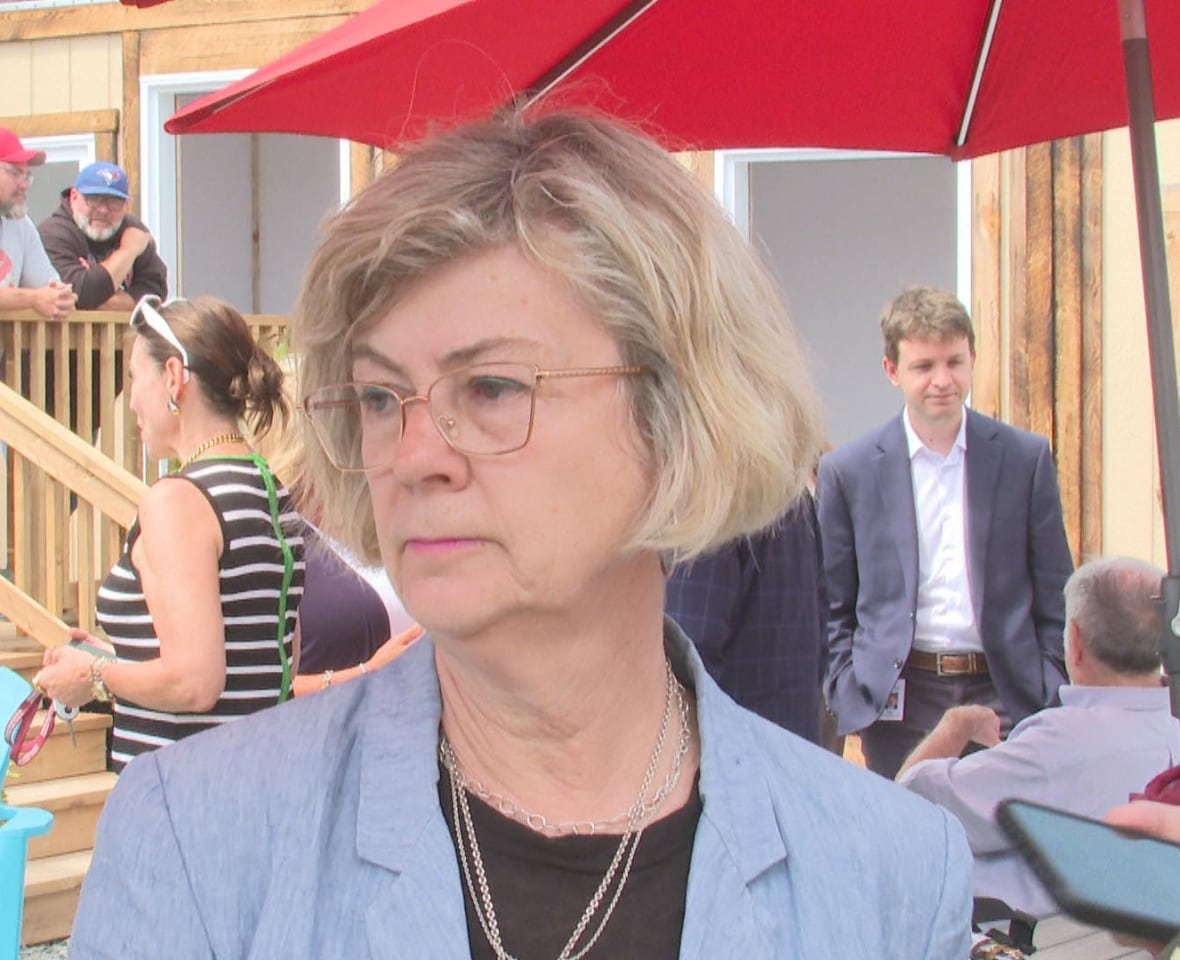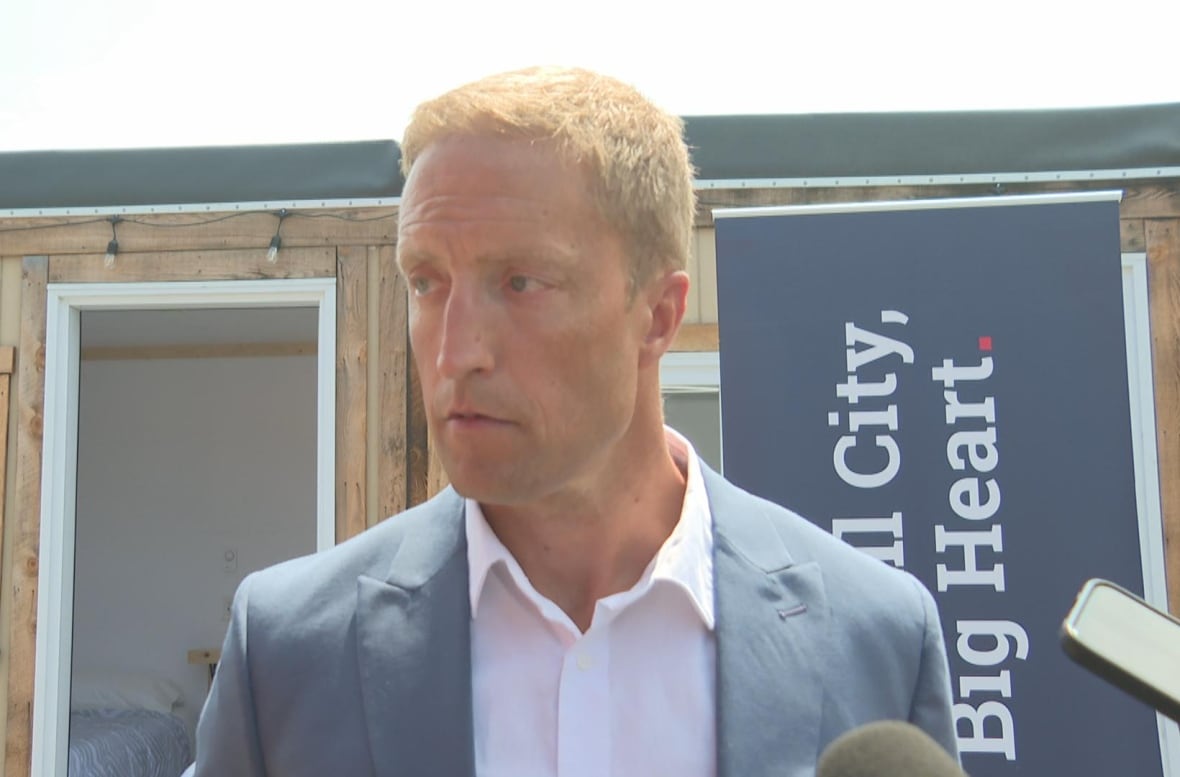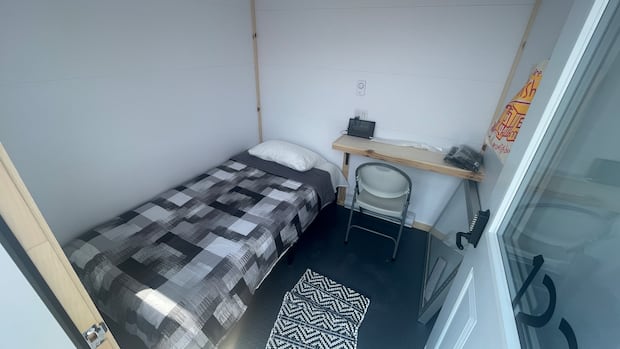Saint John set to open homes for people who've been living in encampments
Mayor Donna Reardon says Neighbourly Homes community has been long time coming.
Twenty-eight tiny homes in Saint John's first "green zone," built for people now living in encampments, will be open to residents on Friday.
The launch of the green zone on Egbert Street, a small side street off Thorne Avenue in east Saint John, has been a "long time coming," Mayor Donna Reardon said Monday.
"We've got 28 buildings here we're going to move people into — it's something we've been waiting for, something that we've wanted to do," she said at a news briefing.
A second site will open later this year, for a total of 56 tiny homes for people who have been living in encampments.
Both sites are near the Atlantic Superstore and the Church of England Cemetery.
The 12 Neighbours charity, creator of a similar development in Fredericton, will operate the green zones, which are intended to be transitional housing.
The first Saint John site, a community to be called Neighbourly Homes, has two courtyards and 28 individual units. Every unit has a bed, locking doors, heat, lights and internet. Residents will have shared washrooms, laundry, kitchen and multi-purpose facilities.
The community will also have some 24-hour-a-day services such as recovery aid for people struggling with addictions.

Saint John first announced its plans for the green zones as a part of its Housing for All strategy launched in July 2024.
The housing plan followed a public outcry and calls for action on homelessness after a deadly winter for some people living in encampments.
The site was made possible through a $3.5 million funding agreement with the provincial and federal governments.
"It's all very thoughtful the way it's been put together and it's a great step," Reardon said. "We need the housing, so this is it."
A starting point for a growing problem
Meanwhile, the city's and the province's homeless population as a whole has grown. The most recent numbers from the Human Development Council, a Saint John-based non-profit, show homelessness in the province grew to 1,529 from 493 between March 2021 and 2025.
The group's data dashboard on homelessness shows there were 287 chronically homeless people in Saint John in June. That number was 159 in the same month last year and 142 in June 2023.
Early this year, the government of Premier Susan Holt pledged to reduce the homelessness population in the province to 621 between by 2029.
"Some people said, 'Well, that's not very aggressive — and I say it's absolutely aggressive " said Marcel LeBrun, the founder of 12 Neighbours.
"Because the train is going the other way and we're trying to stop the train and move it the [opposite] way. It's a huge challenge to reduce chronic homelessness. But this government's been really committed to it."
LeBrun said he hopes the Saint John site and other housing affordability plans approved this year position the province as a leader.
"There's no reason we can't actually be a national leader and even an international leader in reducing chronic homelessness," he said
"We believe that housing is more than just shelter. It's just the beginning. It's the critical starting point. You need a house to be able to recover, to be able to heal, to be able to move forward. But it's just a starting point."

Greg Cutler, the city's community development manager, said the site will have security cameras, foot patrols by Saint John police and vehicle patrols for safety within and surrounding the green zone.
The city's Housing for All strategy also includes plans for red zones —- spaces that would prohibit encampments — details for which, Cutler said, are still being ironed out.
"Those sites will be a buffer zone around particular spaces like schools, children centre splash pads, that kind of thing — that's what people can expect," he said.
Other municipalities in the country has seen push-back, including legal challenges against efforts to tear down encampment sites. Edmonton, for example, saw an unsuccessful lawsuit against that city's efforts to dismantle encampments.
Cutler said the green zone strategy in Saint John is an effort to have places for people to relocate once red zones are decided, and the city's lawyer and the province's Social Development Department are involved.
"We're cautiously moving forward with that piece," he said.


